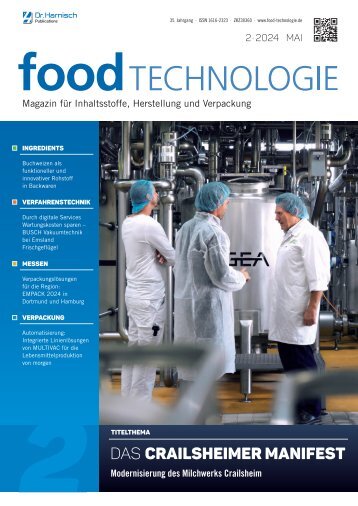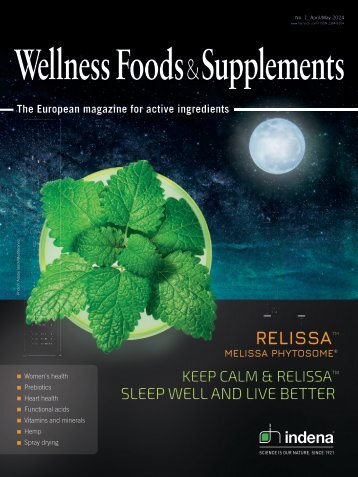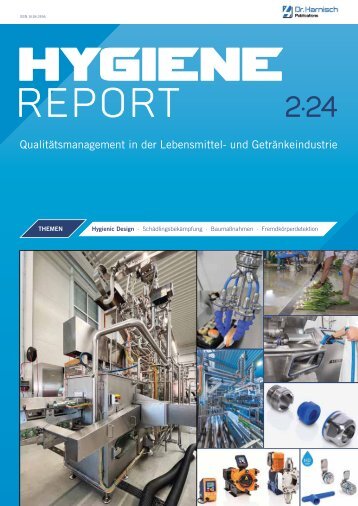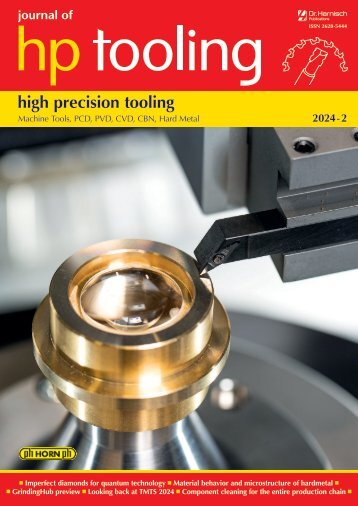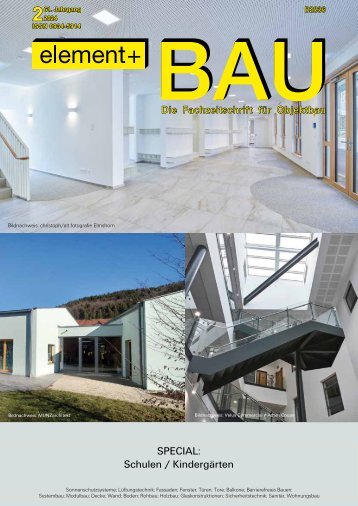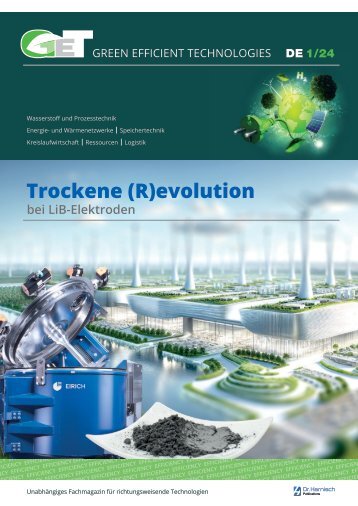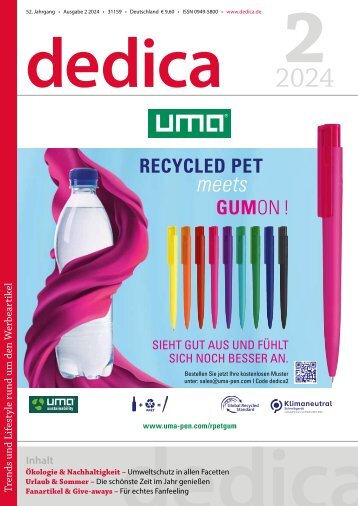GET – GREEN EFFICIENT TECHNOLOGIES EN 1/23
- Text
- Efficiency
- Hydrogen
- Pumps
- Technologies
- Efficient
- Solutions
- Materials
- Operating
- Sealing
- Applications
- Harnisch.com
Cover story Conserving
Cover story Conserving energy and saving CO 2 using non-metallic containment shells in magnetic coupled pumps Ralf Schienhammer Fig. 1: Conserving Energy is a growing concern both for the use and the production of pumps Rising energy costs and a growing awareness of limiting the CO 2 impact of production lead to increasing concern in many sectors on how to reduce energy consumption. Of course, pumps and their drives are one of the biggest energy consumers to look at, both directly (drive power consumption) as well as indirectly (other utility consumptions and maintenance requirements). The current situation The first steps to securing a more energy-efficient fluid handling were – and still are – taken by putting increasing importance on the energy efficiency of the pump drivers. Higher and higher nominal efficiencies are required for electric motors to meet with current and future regulations (not considering the resource requirements due to the need for more and more copper to achieve these). For the example of a typical 45 kW 2-pole motor the following minimum efficiencies apply: - IE2: 92.9 % - IE3: 94.0 % - IE4: 95.0 % By this rule, assuming we have an optimally loaded pump and motor combination operating close to the rated power difference and assuming again a pump operating 24 hours a day all year the difference between an IE2 and an IE3 motor would be approximately. 4,965 kWh, while the difference between an IE3 and an IE4 motor would be approx. 4,414 kWh. If we’re checking the EAA website for their latest published CO 2 equivalent data, they publish the following values for 2021: we get an average equivalent for all 27 European Member states of 275 g CO 2 e/kWh, with some heavily industrialized nations having considerably higher values (Germany 402 g CO 2 e/kWh, Netherlands 418 g CO 2 e/kWh) while others are of course considerably lower (France 67 g CO 2 e/kWh or Sweden with only 9 g CO 2 e/kWh.) 8 GREEN EFFICIENT TECHNOLOGIES 2023
Cover story Efficiency Class IE2 IE3 IE4 Minimum Efficiency 92.9 % 94.0 % 95.0 % Operating Hours 8,760 h 8,760 h 8,760 h Total Power Consumption 424,327 kWh 419,362 kWh 414,947 kWh CO 2 e produced 116.7 tons CO 2 e 115.3 tons CO 2 e 114.1 tons CO 2 e Energy Costs 89,108.67 € 88,066.02 € 87,138.87 € So, installing an IE4 instead of an IE3 motor will save – best case – 927.15 € and approximately 1.2 tons of CO 2 equivalents per year. The average electricity price for non-household consumers in the EU in the second half of 2022 was specified at 0.21 €/kWh, again with a wide range depending on the country. If we plug in these numbers, we reach the following results for a 45 kW Motor operating all year around at peak power demand. The simplest step – direct action Companies have spent considerable time and money to upgrade the installed base of electrical motors while ignoring a sometimes much easier and more impactful way of upgrading the energy efficiency of their sealless pumps: The containment techno logy. By using non-metallic containment shells made from heavy-duty industrial ceramics, the efficiency of sealless pumps can be increased by 5% to 10% for small and by 10 to 20% for larger hydraulics. That techno logy is now field proven for more than 25 years and is in use for the most demanding applications. As the non-metallic containment shells are not electrically conductive, they transmit the power without generating any eddy current losses and thus are operating loss-free, giving a direct impact on power consumption, allowing the use of smaller, more efficient motors and thus have a very direct impact on the existing pump installations without requiring any new equipment to be installed. Looking back at the earlier example we would not be talking about such minuscule savings but the ability to save 17.7 tons of CO 2 e per year or 13,554.90 Euro of electricity costs per year. When talking about these numbers it doesn’t matter that we’re using the numbers for an IE4 motor as a base. Going further But it would be a mistake to limit the applicability of the non-metallic containment shell technology only to those installations already sealless today. Sealless pumps are still a vast minority of installed pumps, even though they offer a lot more benefits when looking at the overall pump population in any kind of plant or factory when compared to mechanically sealed pumps: • Mechanical seals have finite operating life – requiring shut down for maintenance when the seals are worn out. • The unavoidable leakage through the seals, whether it is to the atmosphere (for single-acting seals) or the product (for doubleacting seals) means a loss of product or product quality and environmental contamination, either by product or by the barrier /quench liquid • Double-acting and/or quenched seals require additional utilities such as barrier liquids, steam, nitrogen, or oxygen, which requires energy and supplemental equipment to prepare and supply. One obvious solution to this would be to use sealless pumps (magnetic coupled or canned motor type). Yet they still are largely not considered as a solution to these questions because of a few prevalent myths told about them. However, with the developments of technology during the last decades there exist field-proven solutions for pretty much every point sealless pumps still get criticized for today. Myth 1: Sealless pumps are less efficient than mechanically sealed pumps This is a typical criticism and one of the most complex ones to address because pump efficiency has multiple aspects: • Pump hydraulic efficiency • Drive efficiency • Impact of the power transmission Myth 1a – Sealless pump hydraulics have worse efficiency than sealed hydraulics The first part, hydraulic pump efficiency is the easiest one to put to rest. For most manufacturers, the hydraulics used are the same for the sealed and sealless designs with no appreciable energy impact. Fig. 2: Standard Hydraulic Unit – Identical with that of a mechanical sealed pump GREEN EFFICIENT TECHNOLOGIES 2023 9
- Seite 1 und 2: GREEN EFFICIENT TECHNOLOGIES EN 1/2
- Seite 3 und 4: Editorial Harvest the sun Humanity
- Seite 5 und 6: HAMPRO® HIGH-PRESSURE PROCESS TECH
- Seite 7: Leading article sion. In fact, it i
- Seite 11 und 12: Cover story Myth 3: Journal bearing
- Seite 13 und 14: Cover story Sealless pumps, both ce
- Seite 15 und 16: Energy carrier hydrogen Transport L
- Seite 17 und 18: Energy carrier hydrogen Material se
- Seite 19 und 20: Energy carrier hydrogen Material se
- Seite 21 und 22: Energy efficiency Heat recovery Fig
- Seite 23 und 24: Energy efficiency Heat recovery Fig
- Seite 25 und 26: From the research Heat pumps Fig. 2
- Seite 27 und 28: From the research Heat pumps Fig. 6
- Seite 29 und 30: Efficient manufacturing Special mec
- Seite 31 und 32: Decarbonisation Supply traffic Fig.
- Seite 33 und 34: Decarbonisation Supply traffic shou
- Seite 35 und 36: Decarbonisation Operating power max
- Seite 37 und 38: Decarbonisation Operating power pro
- Seite 39 und 40: Decarbonisation Production local su
- Seite 41 und 42: Decarbonisation Production fast swi
- Seite 43 und 44: Circular economy Production deep) o
- Seite 45 und 46: PROCESS TECHNOLOGY&COMPONENTS © Ae
- Seite 47 und 48: Companies - Innovations - Products
- Seite 49 und 50: Companies - Innovations - Products
- Seite 51 und 52: Brand name register Lutz Pumpen Gmb
- Seite 54: Dr. Harnisch Verlags GmbH Eschenstr
Unangemessen
Laden...
Magazin per E-Mail verschicken
Laden...
Einbetten
Laden...








































